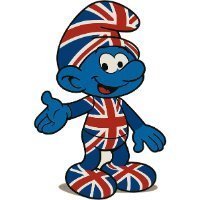A Historical Analysis Of Why Thailand Likes America
-
Recently Browsing 0 members
- No registered users viewing this page.
-
Topics
-
-
Popular Contributors
-
-
Latest posts...
-
142
Israel slaughters 5 more journalists
If it was not journalists killed why are a lot of countries condemning the killing? Because they all know the IDF ,yet again, has killed innocent civilians, cleared land that they took over, all contrary to the Geneva Convention, not that Israel is bothered about any law; they just do what they want to do. In the mean time, in the West Bank Palestine's long time settlers are being attacked and basically kicked off they land they have owned for a lot of yeas,even more so since the conflict started, so more illegal homes can be built, again all illegal, all against ICJ ruling, are the Israelle's bothered, no they just do what they like again. The conflict is not going to stop until Netanyahu's coalition government with his very right-wing partners, all hell bent on destroying the Palestinian nation are somehow changed, and that is not going to happen soon, stalemate. -
8
The smell of lefty's imploding everywhere News...
AFAICT, policy from Trump consists of making the rich richer, hollowing out the middle class, and declaring war on democratic institutions. Firing anyone who produces facts he does not like. Then there's his tariff war, adding to the cost of living for any American who is not rich. Causing other nations to pivot away from America, and seek trade deals elsewhere. In 3-6 months time, as the imported stockpiles run out, the true cost of Trump's actions will be apparent to Americans. Some will still be in denial, others will realize they have been conned - twice. -
5
Tourism Tourist Arrivals in Thailand Drop by 5%
I bet the figures are much higher than what they have given out -
59
Trump and Putin: The meeting.
Putin will be in Alaska, while Trump is in Russia on the same day.............that is if someone tells him which day it when he wakes up. During a news conference announcing a public safety emergency in Washington, President Donald Trump said twice that he would be traveling to Russia to meet with Vladimir Putin -- but their summit is taking place in Alaska. -
336
USA Maxwell Clears Trump: DOJ Considers Releasing Interview
So you don't understand the difference between the Epstein files (evidence) and the Grand Jury material? Your ignorance is staggering. -
59
Trump and Putin: The meeting.
That's a good idea. Trump can go to Alaska while Putin, Zelenskyy and VDL meet in, say, Oslo.
-
-
Popular in The Pub







Recommended Posts
Create an account or sign in to comment
You need to be a member in order to leave a comment
Create an account
Sign up for a new account in our community. It's easy!
Register a new accountSign in
Already have an account? Sign in here.
Sign In Now